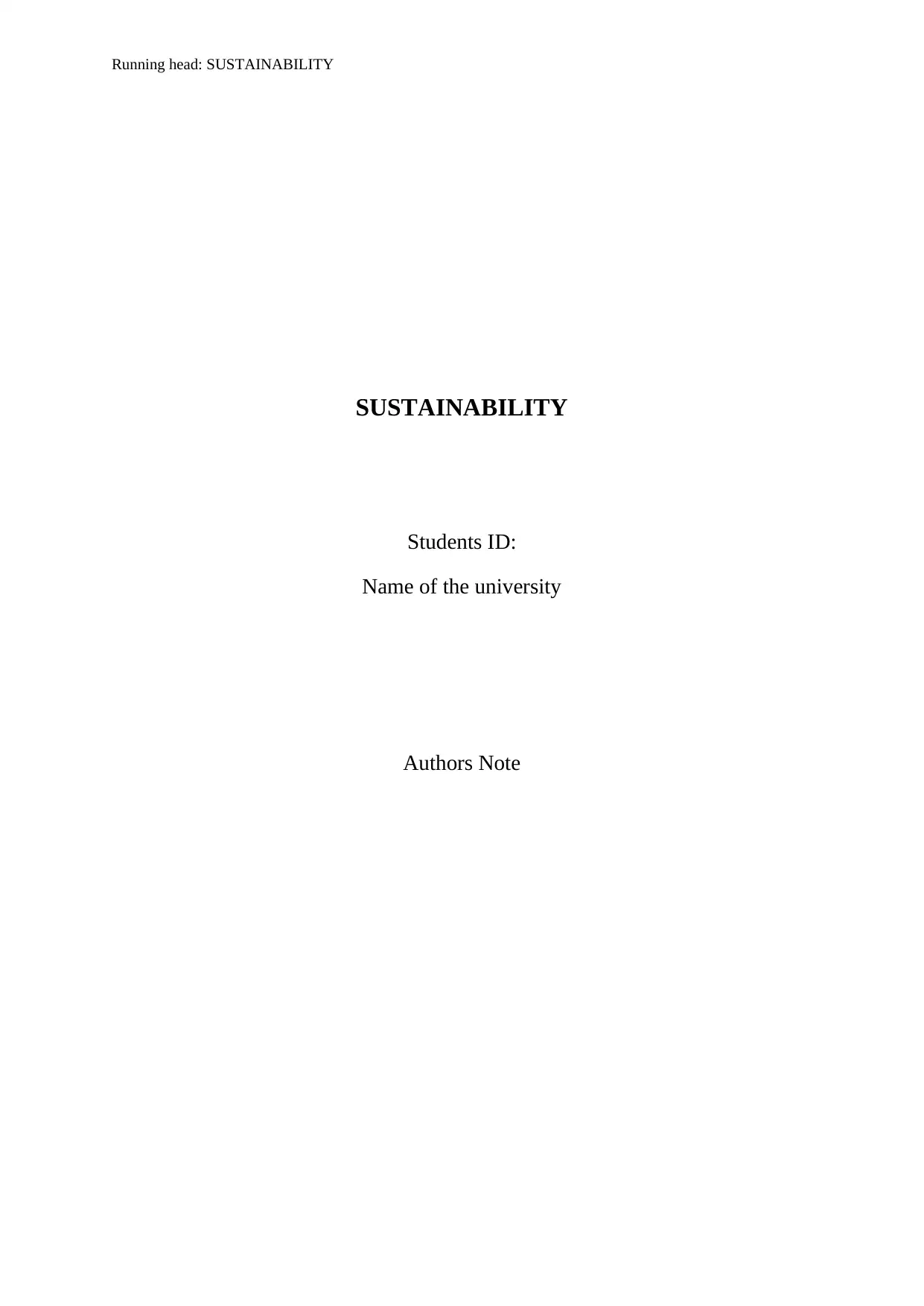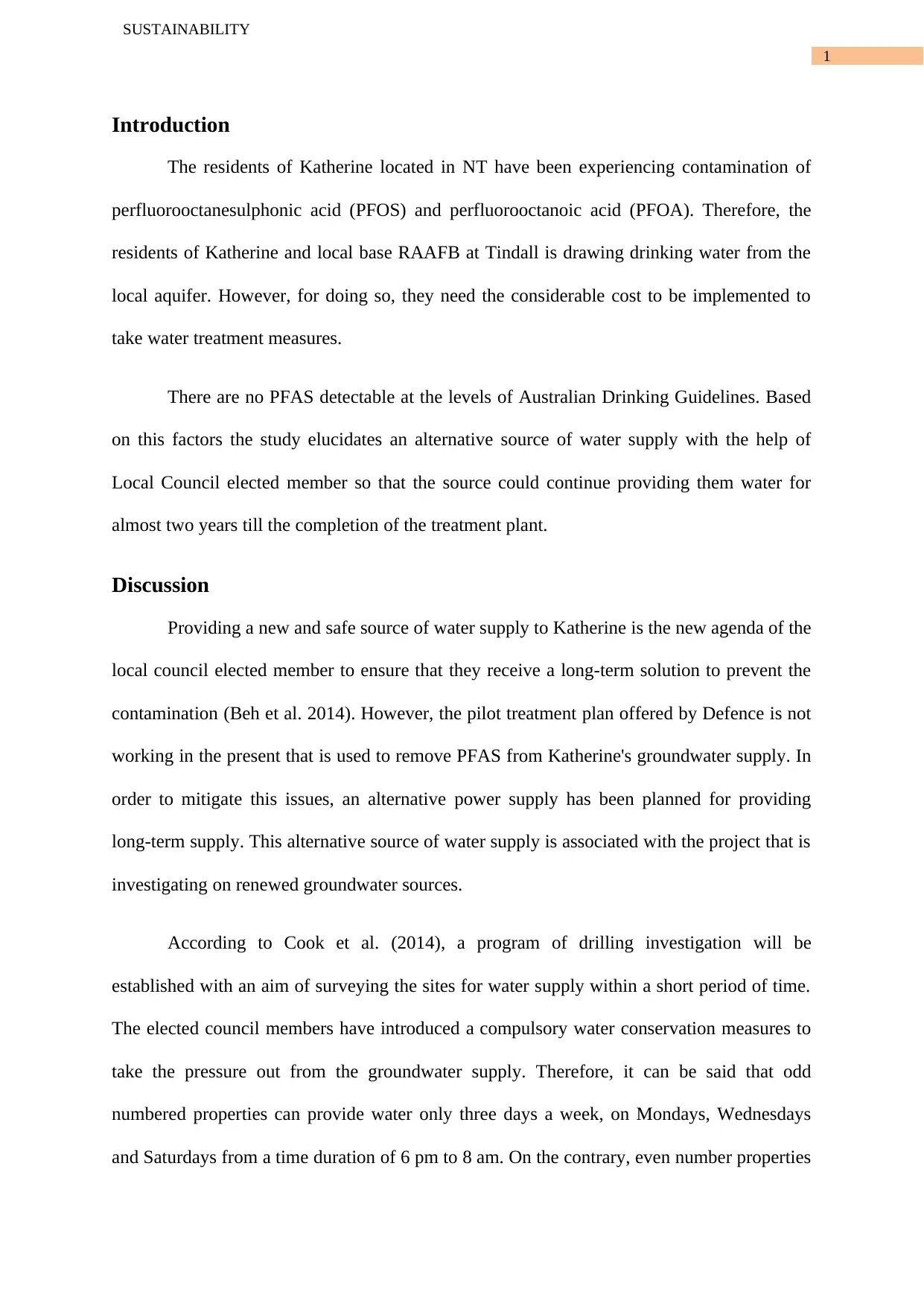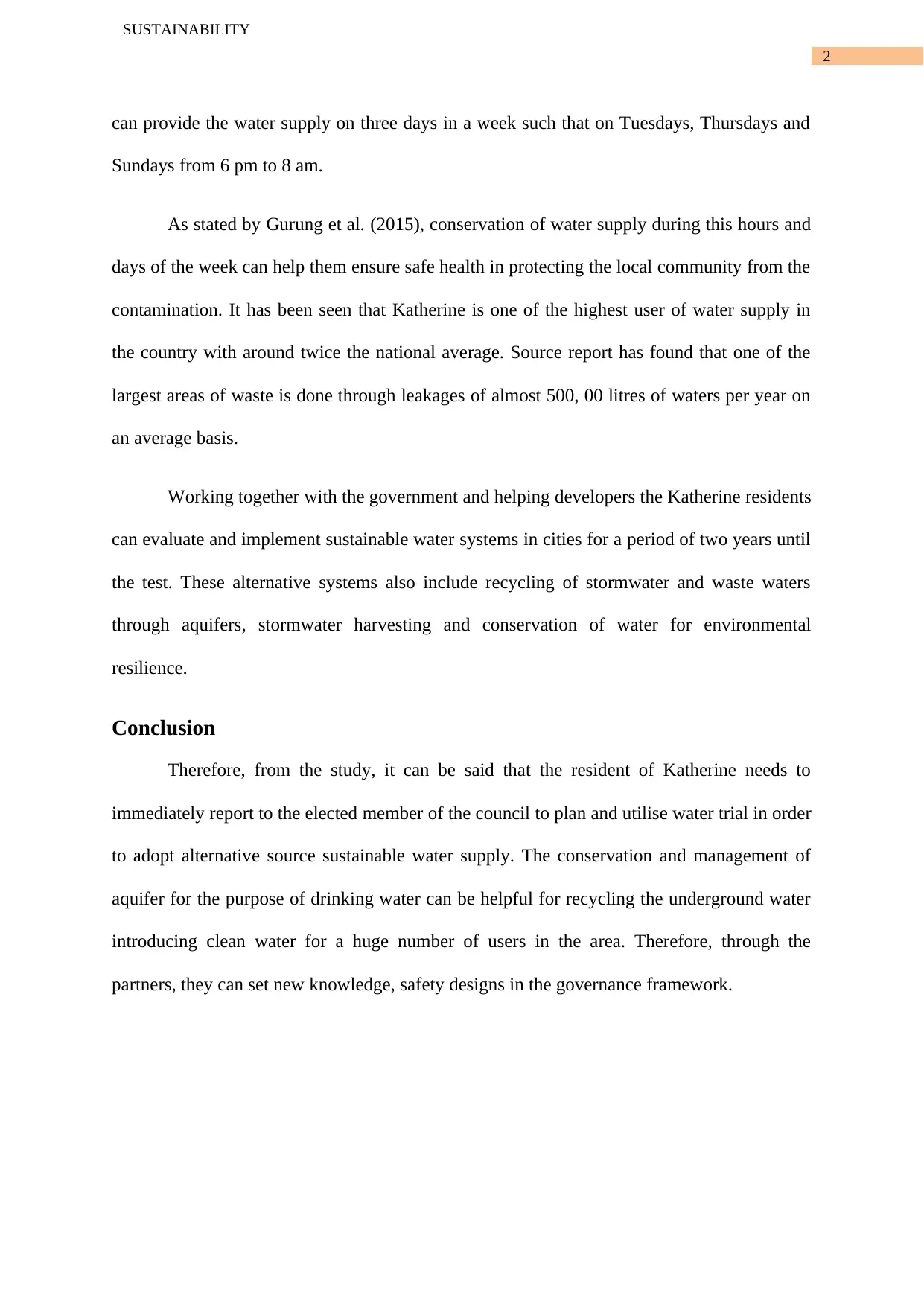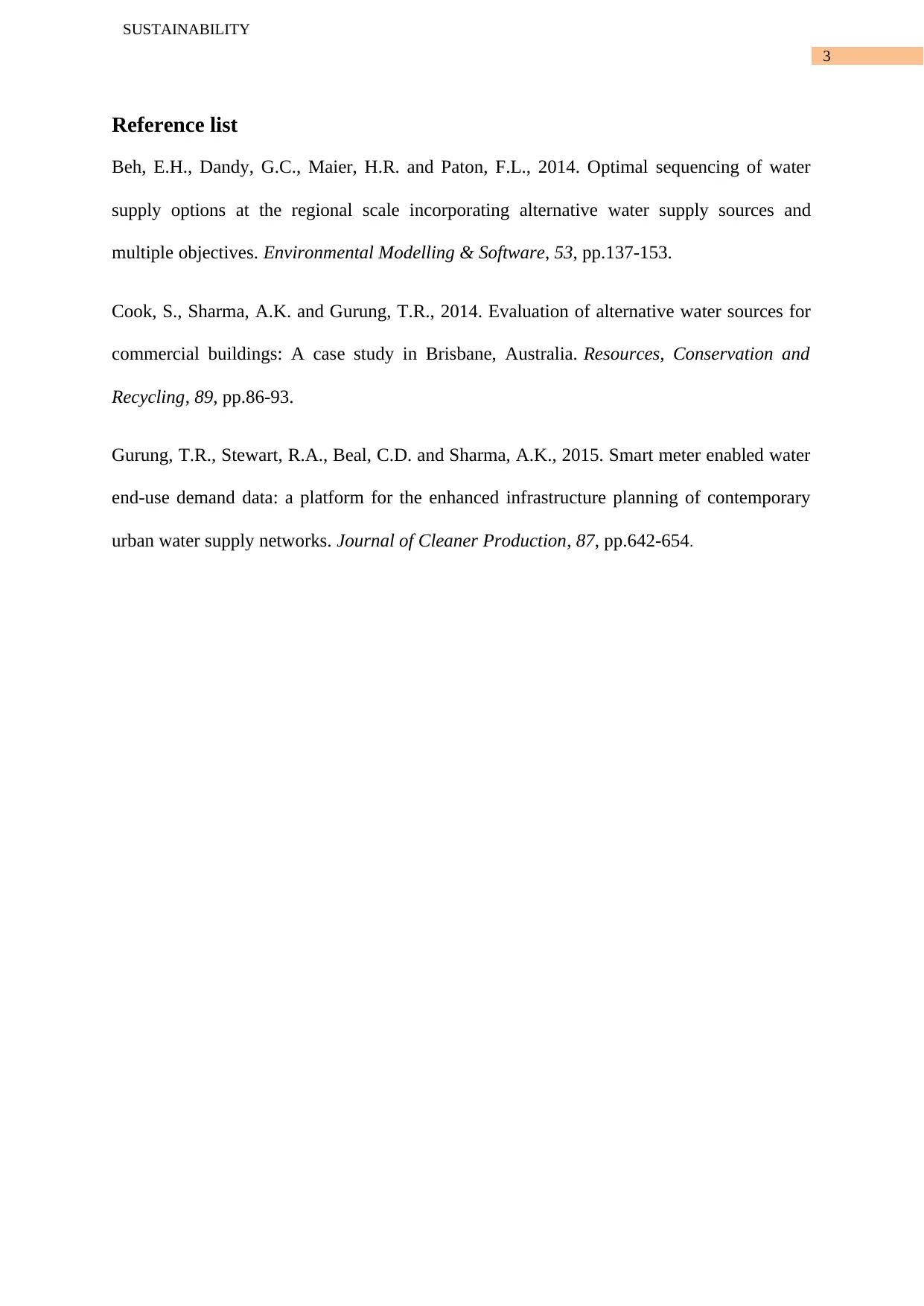Alternative Water Sources for Katherine, NT: A Sustainability Report
VerifiedAdded on 2023/06/04
|4
|757
|398
Report
AI Summary
This report addresses the issue of perfluorooctanesulphonic acid (PFOS) and perfluorooctanoic acid (PFOA) contamination in Katherine, NT, impacting the local aquifer and drinking water supply. The study investigates the need for alternative water sources due to the contamination from fire-fighting activities at the RAAF base. The report highlights the implementation of water treatment measures and the absence of detectable PFAS levels exceeding Australian Drinking Water Guidelines. The report examines potential alternative water sources, considering the time frame needed for aquifer remediation or treatment plant upgrades. It further discusses the role of the Local Council elected member and the introduction of water conservation measures. The study also analyses the high water usage in Katherine and the significant water wastage through leakages, and the need to explore sustainable water systems, including stormwater and wastewater recycling, to ensure a long-term, safe water supply for the residents. The report concludes with a call to action for the Katherine residents to utilize alternative water sources and collaborate with the council to ensure a sustainable water supply.
1 out of 4







![[object Object]](/_next/static/media/star-bottom.7253800d.svg)